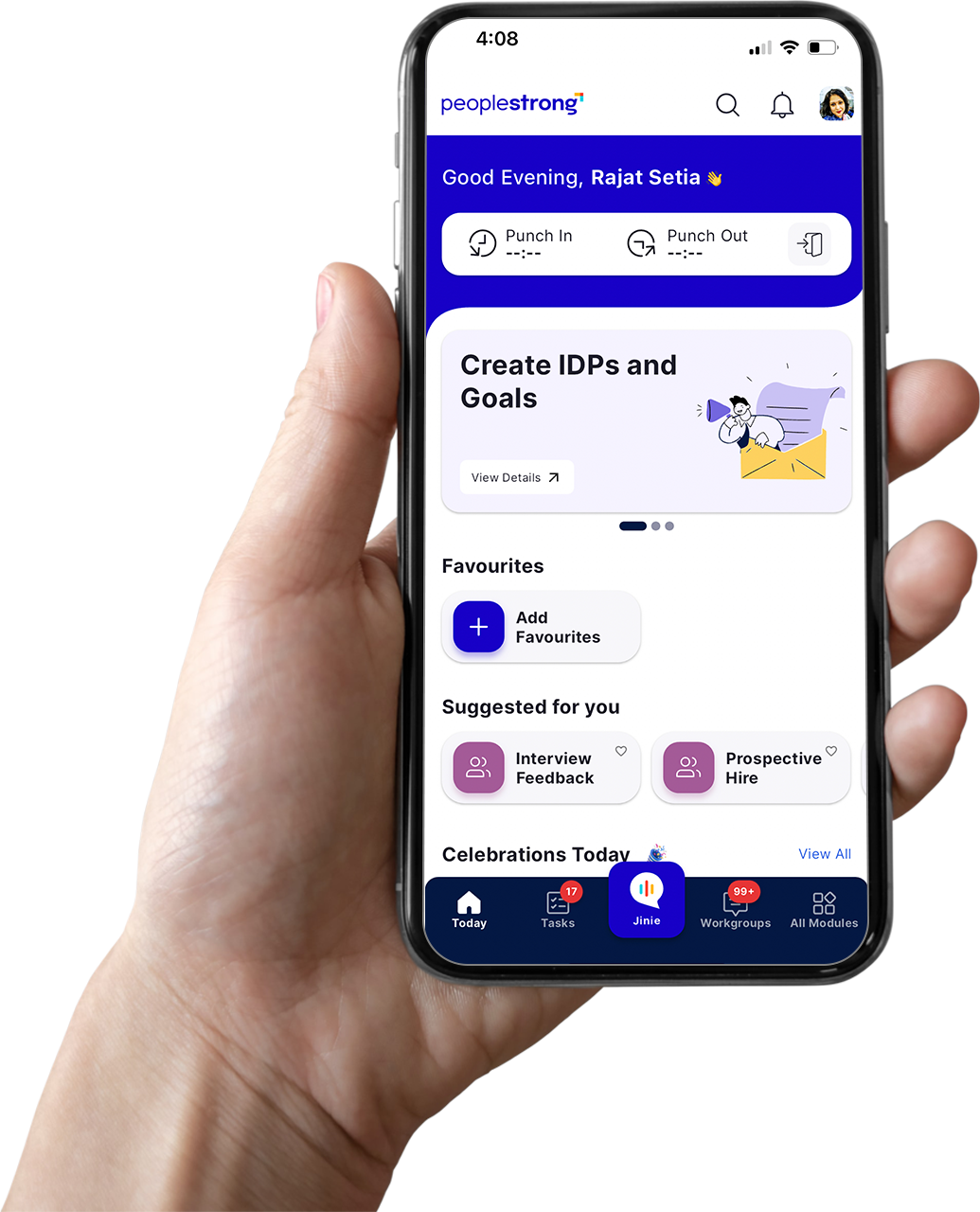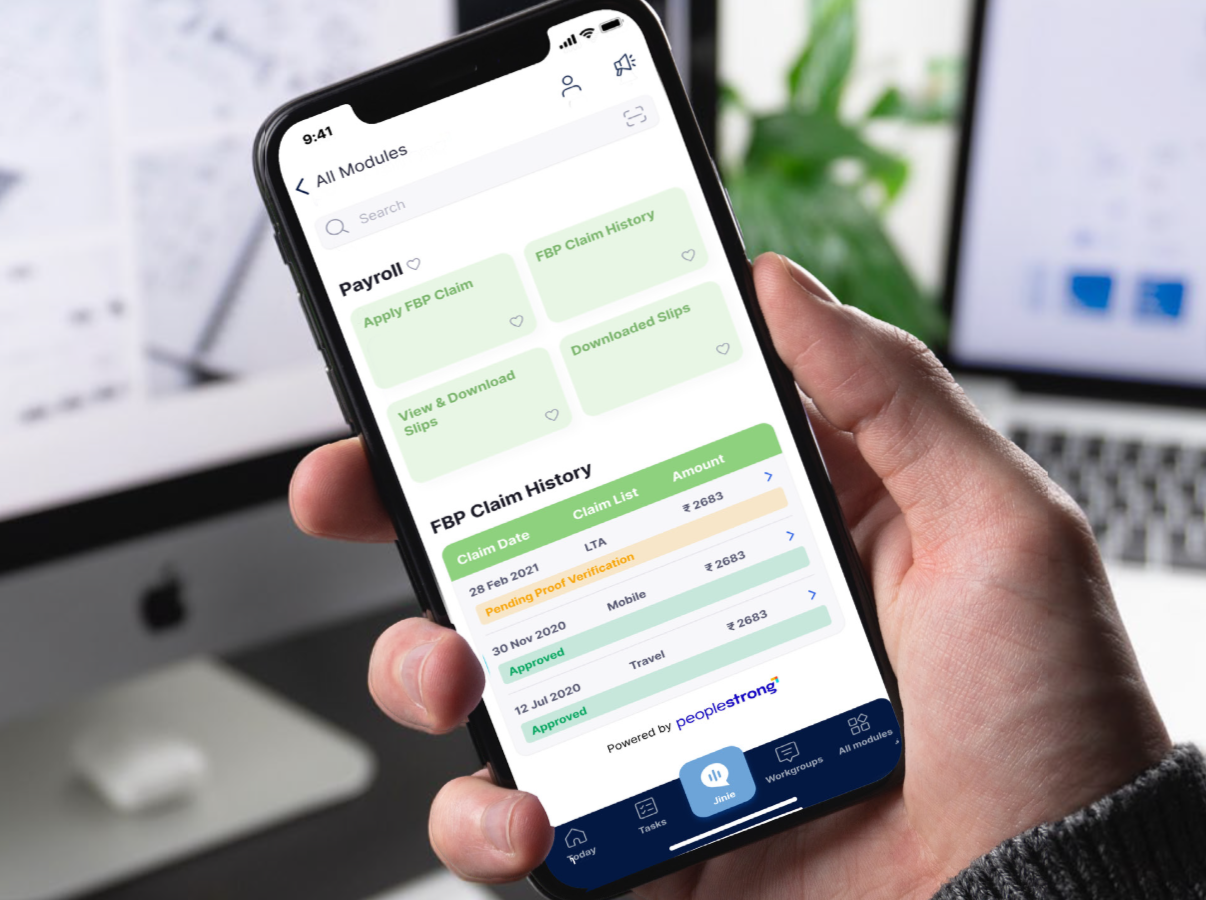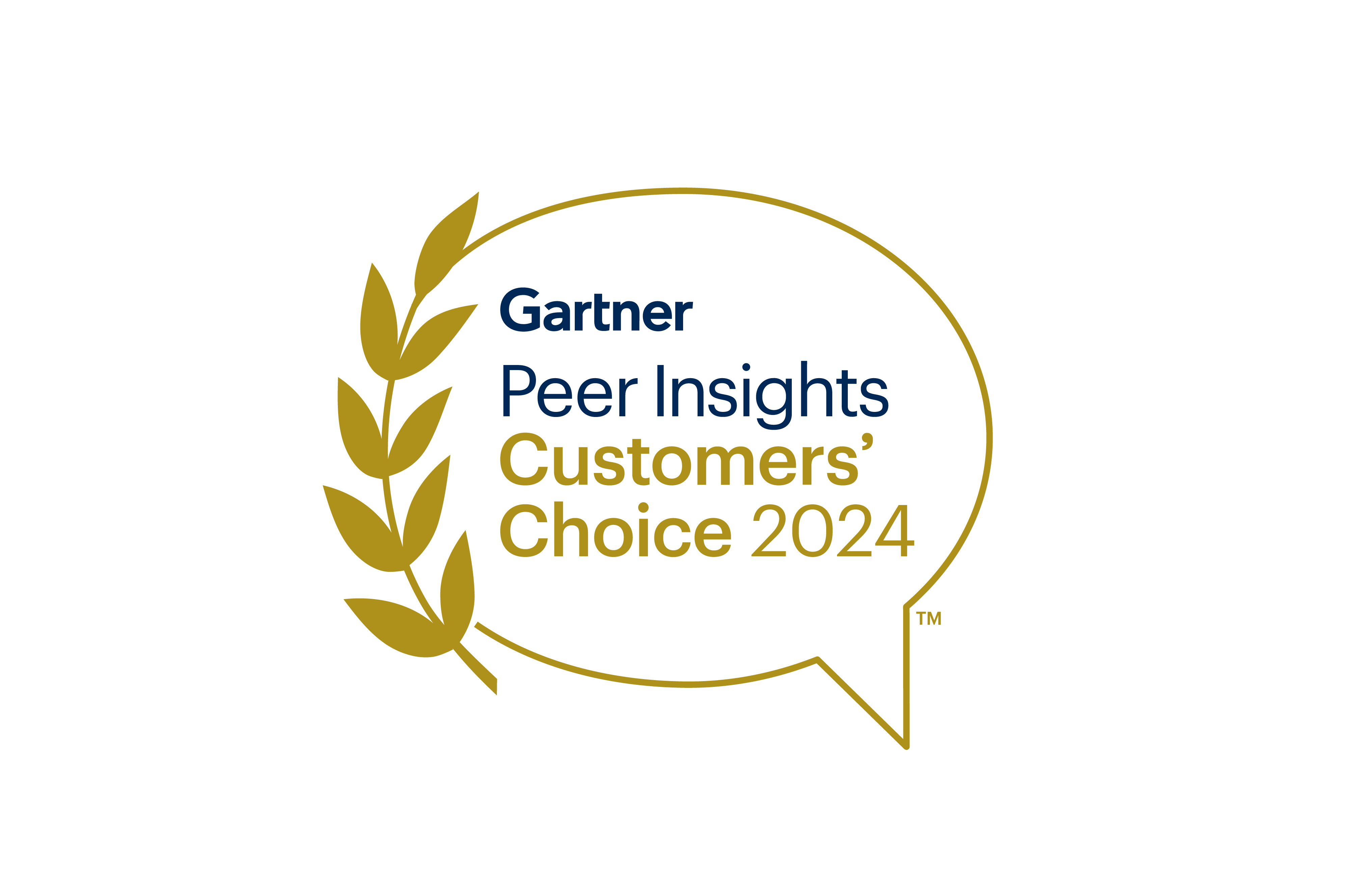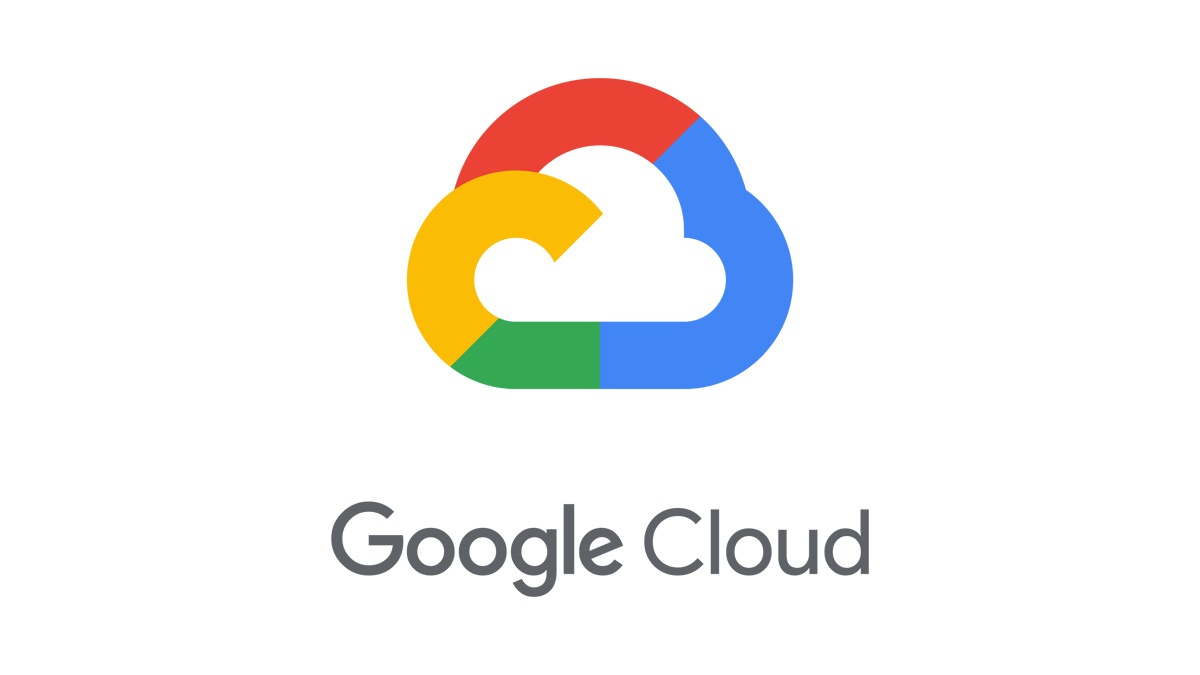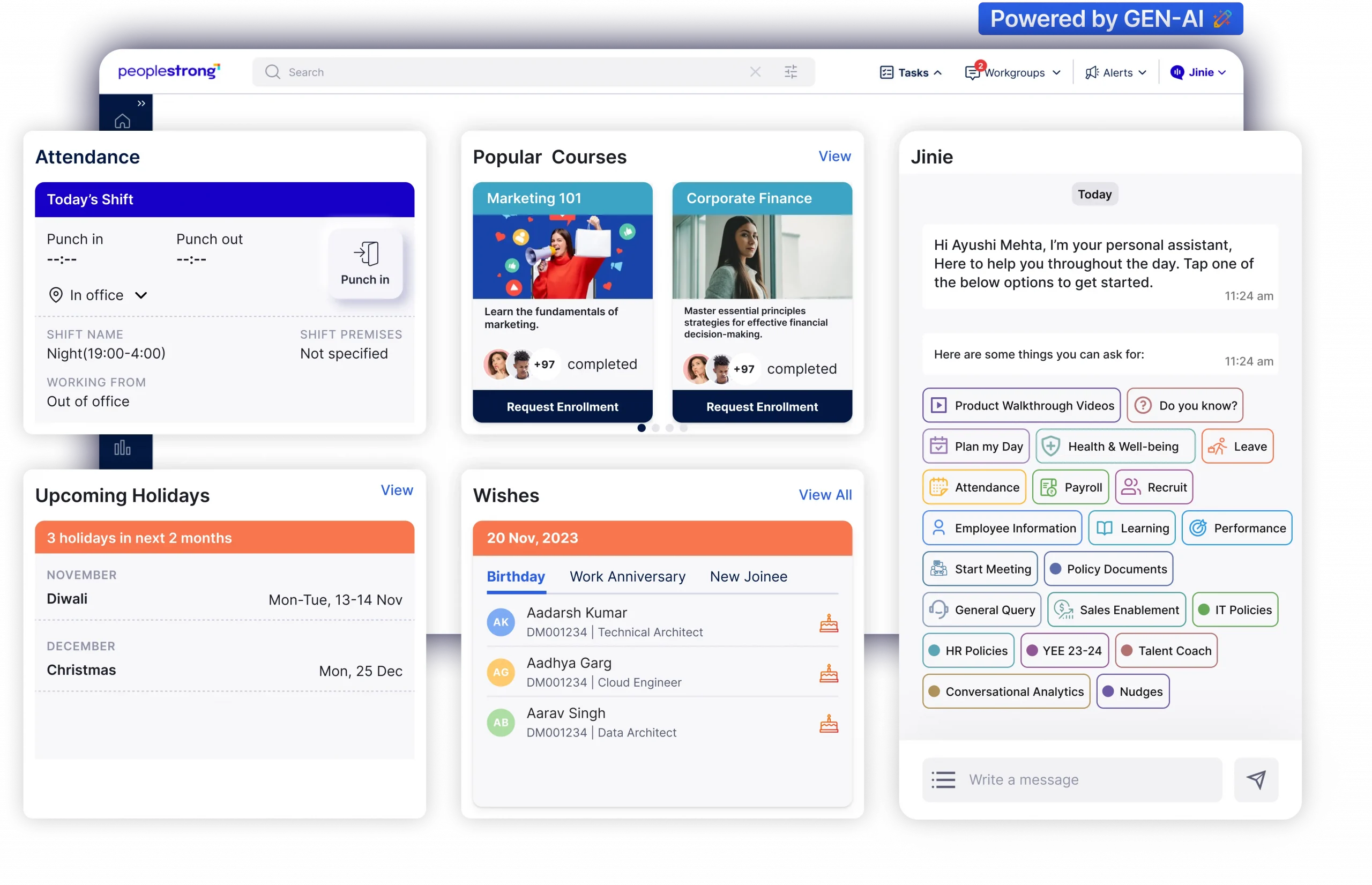We all know HR is a business function that revolves around managing people, and that’s correct. But what often goes unnoticed is the extent of technological involvement in it.
Whether it’s hiring a new employee or managing the performance of existing ones, manual work is a big no-no in modern HR management. It consumes a massive amount of time and effort yet fails to yield satisfactory results. This very ordeal led to the birth of HRMS software.
However, finding the best HRMS software for your needs can be difficult. So, check out this HRMS features list that rounds up 21 must-have features and their significance. Let’s start!
Top 21 HRMS Software Features You Need to Evaluate Before Investing
Here’s a closer look at the must-have HRMS software features:
1. Employee Database Management
One of the most ongoing issues faced by HR departments in the corporate world is effective employee data management.
HR teams manage vast amounts of data about employees, including their personal details, contact information, employment history, and records. Although physical files and folders help, there are two main issues with them: clutter and risk of loss.
Hence, choose the HRMS tool with an employee central database for sending and storing employee data digitally. This will help you prevent data loss while also enhancing accessibility and organization.
2. Time Tracking
In 2024, the US economy lost 50 million hours in productivity daily due to unrecorded work! The main reason? This is probably because manually tracking each employee’s working hours, break durations, overtime hours, and so on is a Herculean task.
Therefore, make it a point to choose an HRMS with built-in time-tracking features. They include biometric device integration, geofencing, web-based punch-ins, etc. It enables you to gain accurate, real-time insights into each employee’s productivity.
3. Leave Management
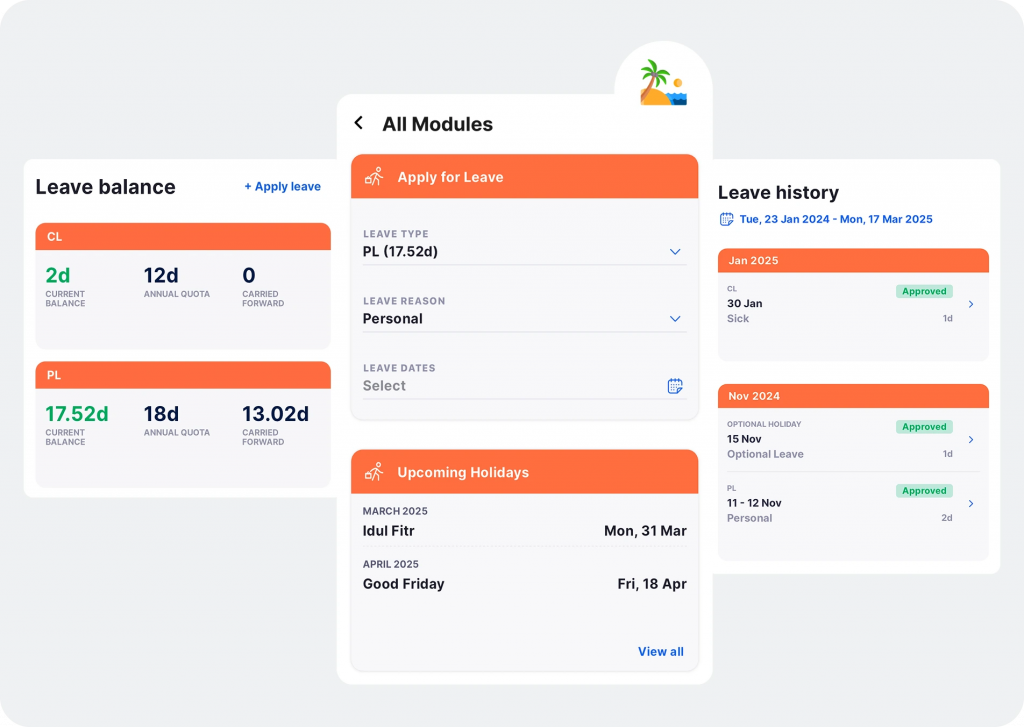
In most companies, the procedure for granting leave to employees is unnecessarily complex and lengthy. This not only hampers employee satisfaction but also makes it difficult for HR professionals to forecast workload distribution efficiently.
So, look for HRMS software that provides a digital interface for applying, approving, and tracking leaves. It should be able to categorize leave requests as sick, casual, and earned. This will help you streamline the procedure and visualize team availability.
4. Payroll Management
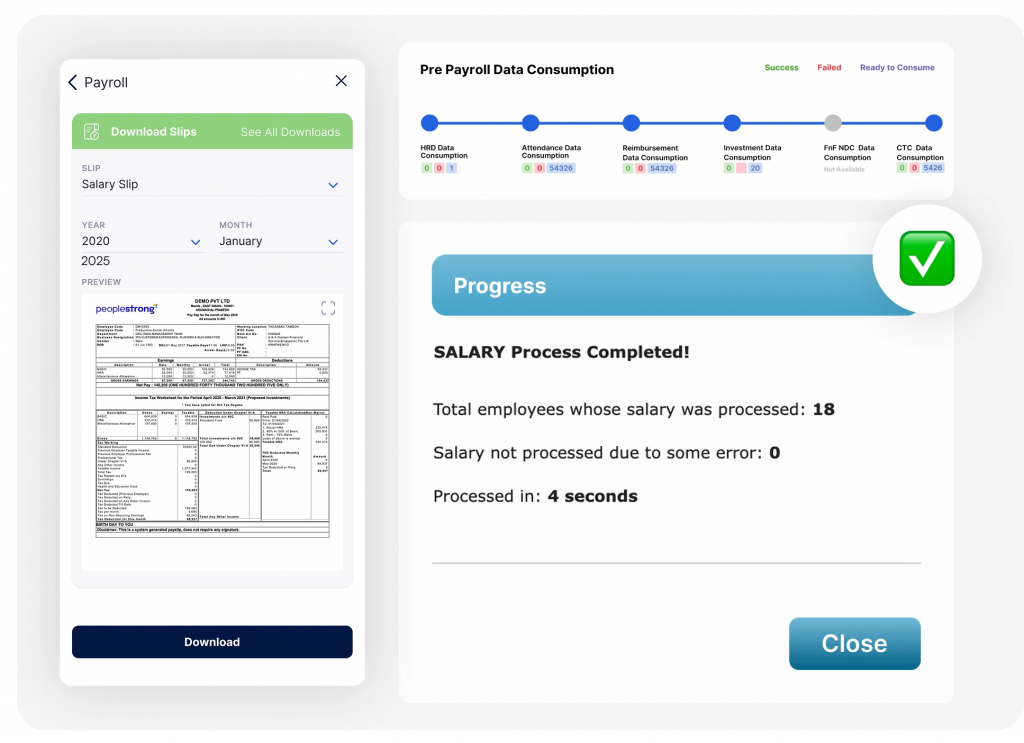
Manually calculating the salary of every employee in the organization is challenging. But that’s not all. To arrive at the correct figures, you must account for every tax, deduction, bonus, and allowance, which requires sheer accounting expertise.
Rather, you could just go for HRMS software with built-in payroll management features. It will handle all aspects of payroll for you—right from calculating amounts to generating payslips, ensuring you pay fair compensation to your employees every month.
5. Benefits Administration
Engaged workers are the greatest assets for an organization. In a study, it was discovered that they increase productivity by 22%, improving organizational effectiveness. Therefore, organizations typically put together a package of exciting benefits programs, such as insurance, retirement schemes, or some wellness benefits, to entice their employees and keep them engaged. But it often becomes an issue to guarantee their fair distribution.
This is why you should go for HRMS software with a built-in benefits administration feature. It lets employees self-register for employee benefits programs to ensure accurate benefits usage and maintain transparency in the entire process.
6. Recruitment Management
Many moving pieces are involved in any hiring process. You, as an HR pro, must post an ad for the job, receive and sort through applications, and interview the hopefuls before you ever actually end up finding the one you want and making them an offer. All of these steps aren’t only time-consuming but also require precision and accuracy.
Therefore, it is highly advisable to choose an HRMS Software that’s best suited for the recruitment process. In essence, it should be able to automate the posting of jobs, screening of applications, scheduling of interviews, and other administrative tasks, allowing the HR staff to focus on the strategic aspects of the process.
7. Employee Onboarding & Offboarding
Each organization has its own procedures for efficient onboarding and offboarding of employees.
However, simply following them is not sufficient. In order to remain compliant, you also have to comply with applicable laws and regulations.
This is where HRMS software with onboarding and offboarding functionality can be useful. Not only does it automate tedious tasks, such as paperwork and data importation, but it also assists in policy adherence for a smooth, risk-free experience.
8. Performance Management
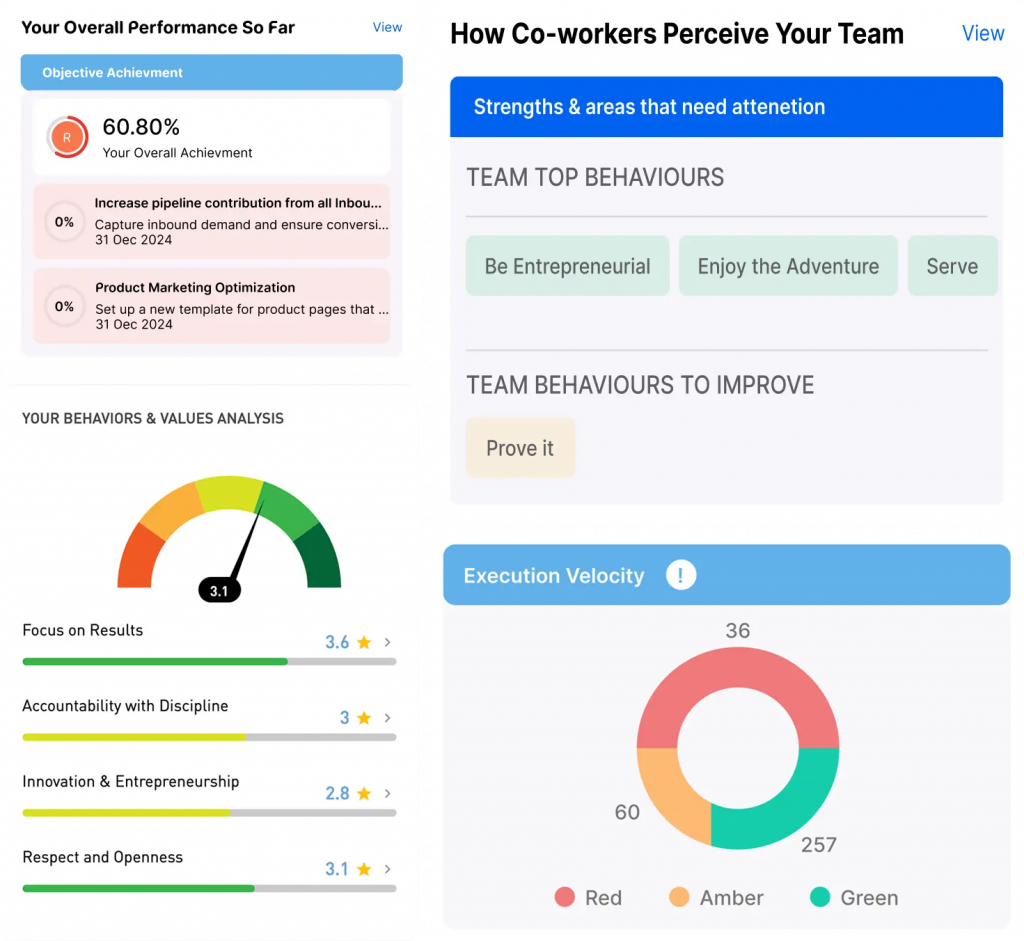
95% of HR managers despise managing employee performance—and it’s pretty reasonable. The traditional performance management framework is extremely complicated—you need to identify skill gaps, set goals, choose KPIs, track progress, and so on.
Fortunately, the right HRMS tool can also address this issue. It can automate various elements of the performance management framework, such as tracking goals, setting KPIs, appraisals, feedback cycles, etc., to save time and effort. So, look for a tool with built-in performance management automation features.
9. Compliance Management
Another persistent issue in various organizations worldwide is maintaining compliance with corporate laws and regulations. The primary reason is that these laws are constantly changing. Therefore, until you remain vigilant, the chances of your company staying compliant are slim.
Therefore, opt for HRMS software that includes compliance management features. It will help you track various legal obligations, including labor laws, health and safety regulations, and tax filings, among others. Apart from this, it automates alerts and documentation for audits, ensuring your organization remains compliant.
Suggested Read:
HR Compliance Guide: Essential Tips for Employers
10. Expense Management
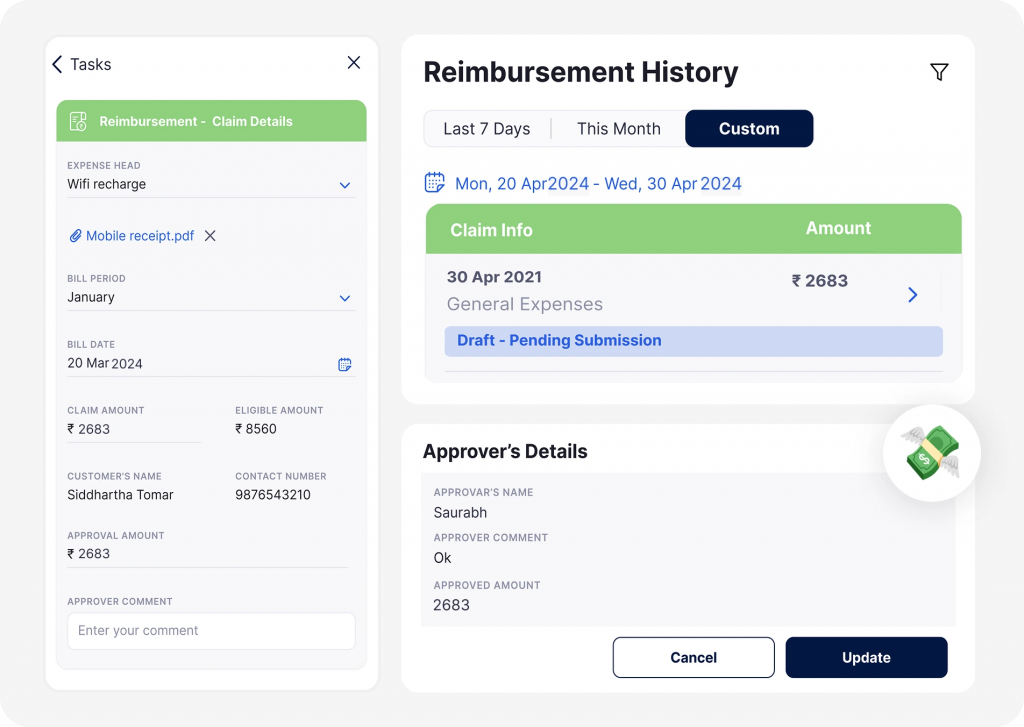
Expense management involves tracking, approving, and reimbursing employees for all office-related expenses incurred on behalf of the company. However, this process can be taxing, especially if your organization has a large workforce.
This is why some HRMS tools offer expense management features. It essentially involves identifying office expenses and automating their entire claim process. If you choose such a tool, it will help you ensure faster and more accurate reimbursements, as well as gain financial clarity.
11. Document Management
Much like employee data, HR departments also face a significant challenge in efficiently managing important documents, such as copies of offer letters, contracts, policy documents, and certifications. In fact, it is also a reason why they lose out on over 20% of organizational productivity.
So, always go for HRMS software with robust document management capabilities. For instance, it should enable you to store digital copies of important documents, provide version control, and implement access controls. This will help you eliminate the need for physical storage of documents to maximize safety, organization, and productivity.
12. Employee Self-Service Portal
These days, almost every organization uses HRMS software with employee self-service portals—and it makes sense why. They empower staff to manage their personal and HR-related requirements independently, which boosts employee satisfaction and data accuracy.
Therefore, another important aspect to seek in an HRMS tool is an intuitive, user-friendly employee self-service portal. It’s essentially a dashboard that presents key employee details and enables employees to manage their needs, such as updating details, requesting leave, and generating payslips.
13. HR Analytics & Reporting
71% of companies consider people analytics a high priority, and 31% rate it as very important. And why not? HR analytics quantify key HR aspects, such as employee turnover, compensation, and engagement, allowing you to easily optimize them to foster growth, productivity, and employee satisfaction.
Therefore, always opt for an HR tool that provides robust HR analytics and reporting features. Most importantly, look for a dashboard that provides insights into employee demographics, turnover rates, headcount, and other relevant metrics through charts, tables, and graphs. This will enable you to make data-driven decisions and enhance your company’s HR performance.
14. Succession Planning
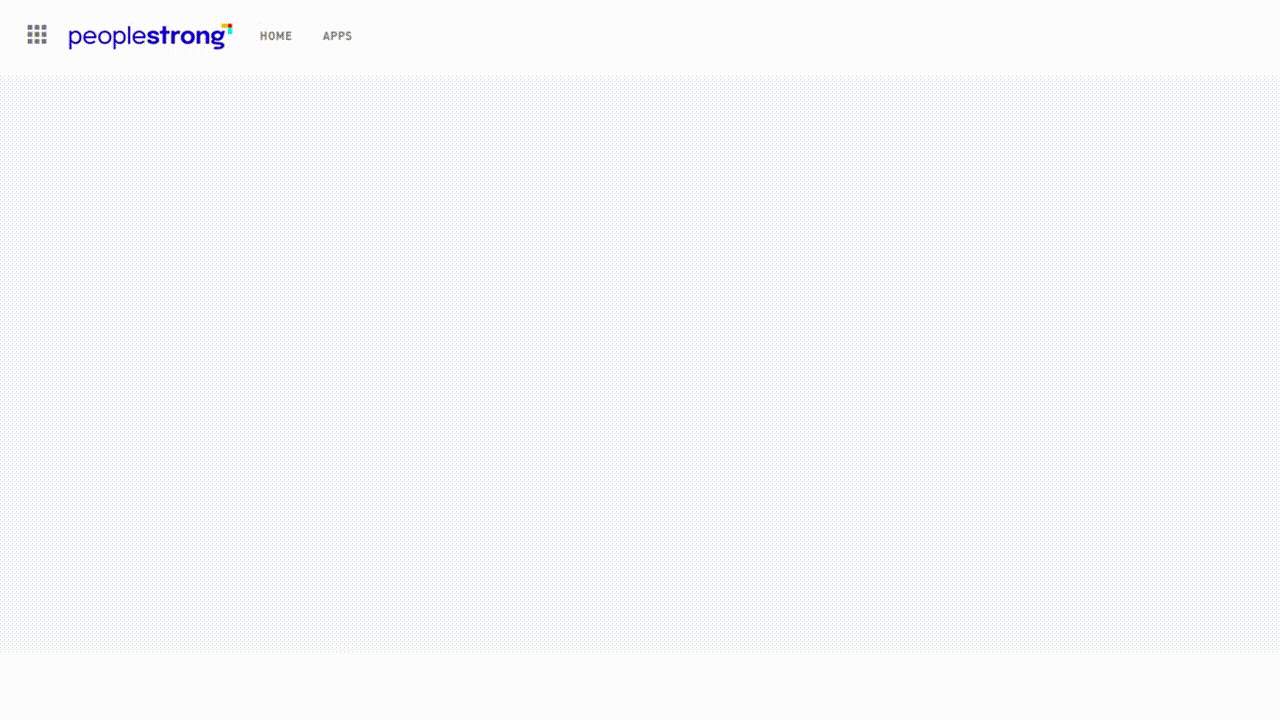
These days, one of the biggest challenges for any organization is finding top talent.
Statistically speaking, a whopping 74% of employers worldwide are facing significant challenges in finding skilled candidates to fill positions in their companies. The right succession planning tool not only makes it easy to identify potential successors within the company but also facilitates effective management of the succession process. It also facilitates their grooming.
Therefore, opt for an HRMS tool that provides succession planning capabilities. It automates the identification of roles and successors, creates personalized development plans, and tracks their progress to ensure your company never faces skill gap challenges or talent acquisition issues.
15. Data Security
HR departments are entrusted with large volumes of employee data, including some sensitive information, such as medical records, financial details, and biometrics. As an HR professional, it’s your responsibility to ensure all this data is stored safely and handled with care.
One way to achieve this is by selecting HRMS software that offers enterprise-grade data security features, like encryption and access control. This will minimize the risk of unauthorized third-party access to employee data.
Additionally, verify that the tool complies with recognized data security standards, such as GDPR, SOC 2, and ISO 27001. They not only safeguard your data against external threats but also ensure compliance with relevant regulations.
16. Multi-Country Support
Organizations that operate with a diverse workforce or in multiple regions of the world often face challenges when scaling. This is because legacy HRMS tools generally do not provide multi-country support. This translates to compliance issues, inconsistent HR processes, and, worst of all, difficulty managing global teams.
So, if you’re growth-focused, choose an HRMS tool that provides multi-country support, particularly in terms of currency and language. This will help you localize HR processes, comply with regional laws, and deliver maximum employee satisfaction worldwide.
Suggested Read:
13 Best Human Resource Management Software (HRMS) in India
17. Third-Party Integrations
Any HR system that integrates all its aspects benefits from improved outcomes, including workflow automation, efficiency, and consistency, compared to those that don’t.
Hence, always choose an HRMS tool with stronger support for third-party integrations. Make sure it integrates easily with your current accounting software, CRMs, project management tools, communication systems, and ERPs. This will make your workflow smooth and well-integrated.
18. Mobile Access

Companies with mobile-accessible time and attendance systems experience up to 30% increase in employee engagement—and that’s just one of the many benefits of providing mobile accessibility to employees for managing their HR needs. It also boosts satisfaction, flexibility, and real-time decision-making.
So, look for an HRMS tool that provides mobile accessibility to users—both HR professionals and employees—for marking attendance, checking schedules, approving leave, and other administrative tasks.
19. Customization
Each organization has a distinctive workforce. Therefore, the “one size fits all” strategy doesn’t work at all, particularly in the situation of HR.
Therefore, a key feature to look for in any HRMS software is its ability to be customized. Before making an investment, verify whether it allows you to customize modules, forms, workflows, and report formats according to your specific requirements. This will make it much more accessible for your HR department to handle recruitment, onboarding, and other key processes.
20. Super Configurability
Let’s say you found an HRMS tool that’s highly customizable and resonates with your needs. But what if it requires you to write complex code each time you need to tailor one of its elements? Quite a nuisance, right?
So, look for HRMS software that’s not just customizable but also highly configurable. Put simply, it should be based on a no-code architecture. This will make it easy to tailor and use, especially for team members who lack a deep know-how of coding.
21. Scalability
HR is a dynamic business process that will likely continue to evolve as new generations enter the workforce and technological advancements reshape the landscape. This is why you must choose an HRMS tool that not only meets your current needs but also accommodates future growth.
So, go for an HRMS tool that’s scalable. You can ensure this by checking its architecture, user capacity, performance, infrastructure, integration capabilities, and hierarchies, among other factors. A scalable HRMS allows your system to grow with your organization—whether you’re expanding to new regions, adding more employees, or integrating novel technologies.
Final Words
Managing people in an organization requires more than just a set of rules and procedures. To introduce efficiency into your practices, you need a robust tool that not only addresses your needs but also streamlines the overall HR management framework, making it more fruitful and simplified.
Although HRMS software is designed for this purpose, if you fail to pick the right one, you cannot reap these benefits.
If your company needs a tool that’s packed with each of these functions, check out PeopleStrong.
This comprehensive software offers an extensive suite of core HR features that encompass recruitment, onboarding, payroll, succession planning, and more. Trusted by over 1000 employee enterprises, it’s the only tool you need to empower your HR team!
Hurry up—get in touch with us now!
FAQs
What is the objective of HRMS?
The main objective of an HRMS tool is to automate and simplify essential HR processes, such as recruitment, payroll, training of employees, and performance management by minimizing manual efforts.
Which is the best HRMS software in 2025?
HRMS software offers several benefits, including enhanced HR efficiency, streamlined processes, and improved compliance with regulations. To learn more, read our article 12 Key Benefits of HRMS Software↗
.

